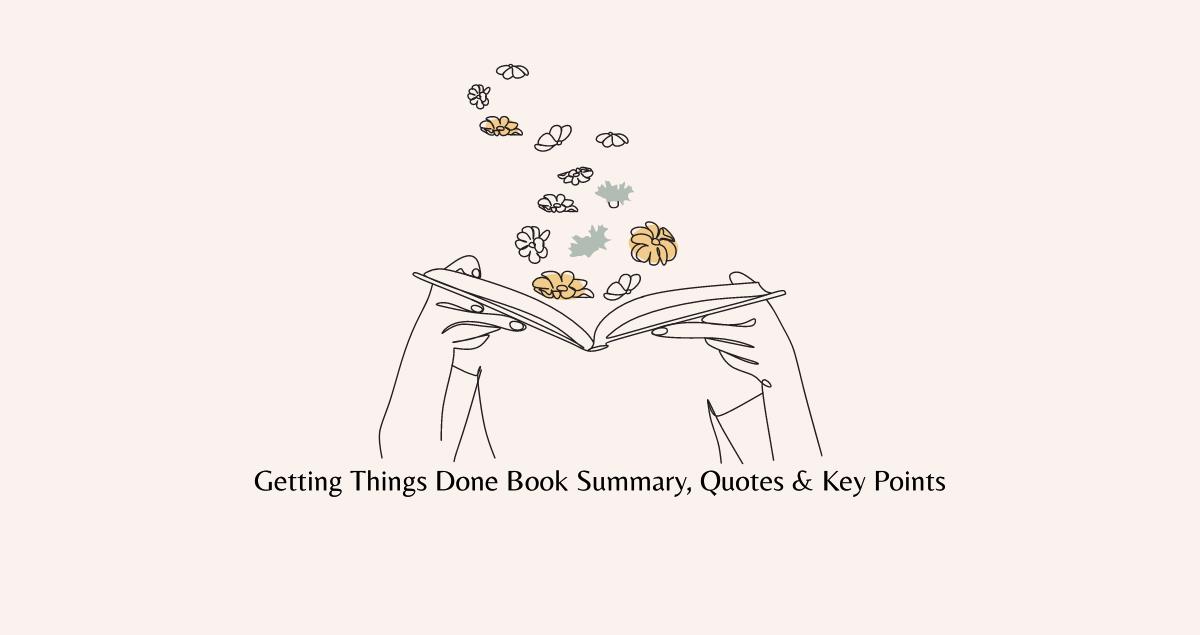Do you ever feel like your to-do list is never-ending and you can never seem to catch up? In his book, "Getting Things Done," David Allen introduces the concept of stress-free productivity. This is achieved through a systematic approach to organizing and managing tasks, allowing you to focus on what's important and reduce stress.
Table of Content
Getting Things Done Book Summary
The Art of Stress-Free Productivity
The book outlines five stages of workflow: capture, clarify, organize, reflect, and engage. Each stage is essential to achieving stress-free productivity. By following these stages, you can ensure that every task is captured, processed, and organized in a way that allows you to focus on what's important.
The Five Stages of Workflow
The author suggests that if a task can be completed in two minutes or less, it should be done immediately to avoid cluttering the to-do list. This is known as the two-minute rule. The book also emphasizes the importance of a weekly review to reflect on accomplishments, review goals, and plan for the upcoming week.
The Two-Minute Rule and The Weekly Review
The book recommends using an inbox to capture all tasks and ideas, which can then be processed and organized into actionable items. Creating a next action list, which is a list of tasks that can be completed immediately and move a project forward, is also recommended. Finally, the author suggests creating a list of tasks that are not immediately actionable but may be relevant in the future, known as the someday/maybe list.
Getting Things Done Quotes
"Your mind is for having ideas, not holding them."
"The key is not to prioritize what's on your schedule, but to schedule your priorities."
FAQs for Getting Things Done
1. What is the two-minute rule?
The two-minute rule suggests that if a task can be completed in two minutes or less, it should be done immediately to avoid cluttering the to-do list.
2. What is the weekly review?
The weekly review is a time set aside each week to reflect on accomplishments, review goals, and plan for the upcoming week.
3. What is the purpose of an inbox?
An inbox is used to capture all tasks and ideas, which can then be processed and organized into actionable items.
4. What is the next action list?
The next action list is a list of tasks that can be completed immediately and move a project forward.
5. What is the someday/maybe list?
The someday/maybe list is a list of tasks that are not immediately actionable but may be relevant in the future.
6. How can I apply the five stages of workflow to my daily routine?
By following the five stages of workflow - capture, clarify, organize, reflect, and engage - you can ensure that every task is captured, processed, and organized in a way that allows you to focus on what's important.
7. How can I prioritize my tasks effectively?
One way to prioritize tasks effectively is to create a next action list, which is a list of tasks that can be completed immediately and move a project forward.
8. How can I avoid procrastination?
Avoid procrastination by breaking down tasks into smaller, more manageable steps and setting deadlines for each step.
9. How can I manage my time more efficiently?
Manage your time more efficiently by using an inbox to capture all tasks and ideas, creating a next action list, and setting aside time each week for a weekly review.
10. How can I achieve stress-free productivity?
Achieve stress-free productivity by following the five stages of workflow, using an inbox, creating a next action list, setting aside time each week for a weekly review, and prioritizing tasks effectively.
Conclusion
If you're feeling overwhelmed by your to-do list, "Getting Things Done" is a must-read. By following the five stages of workflow and implementing the techniques outlined in the book, you can achieve stress-free productivity and focus on what's important.

